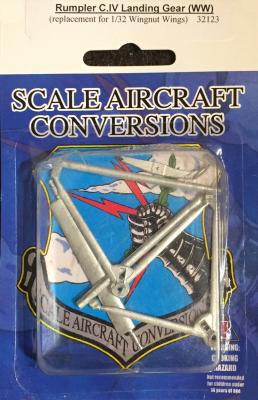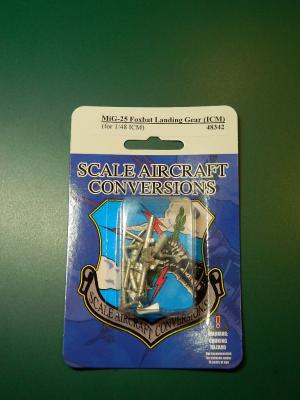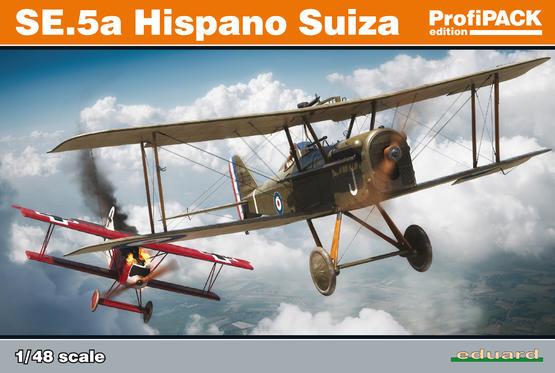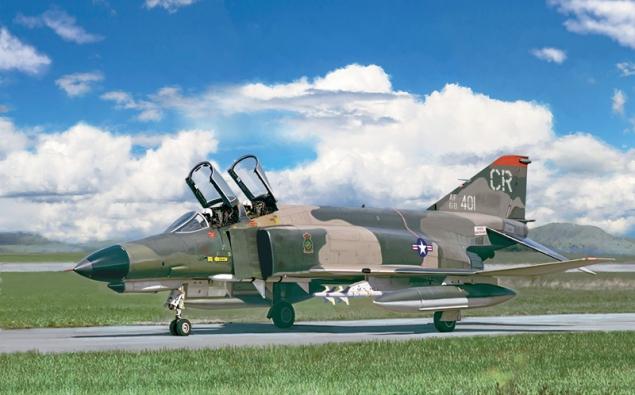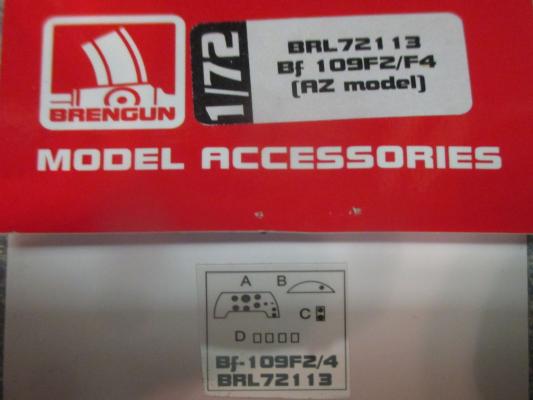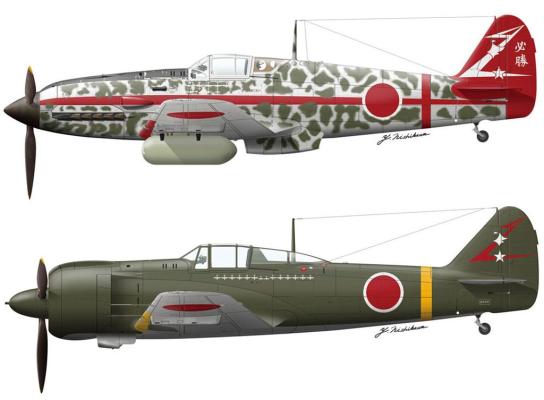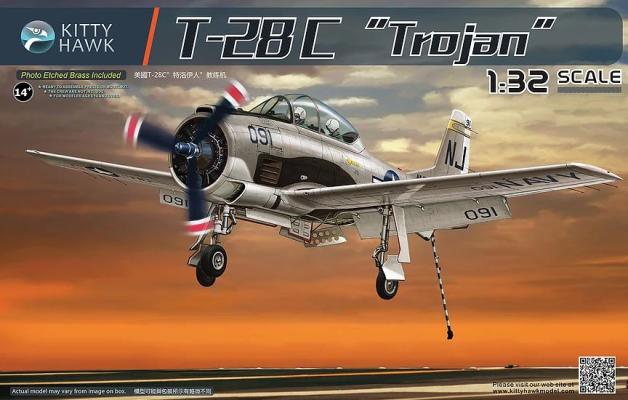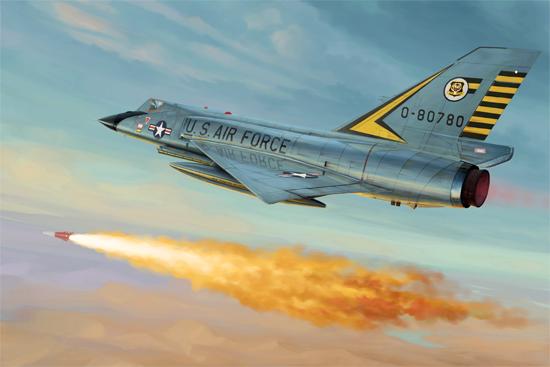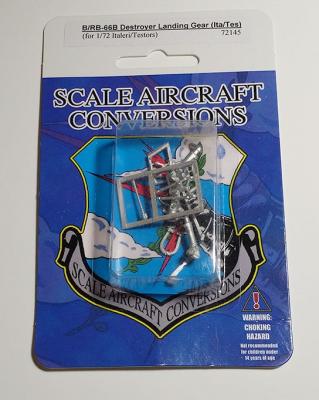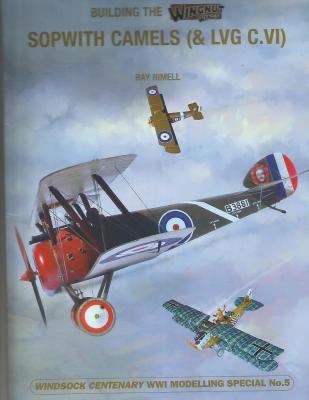Upfront, I want to thank Scale Aircraft Conversions for providing outstanding aftermarket bits for our beloved model kits, and to IPMS USA a big thank you for allowing me to review the Scale Aircraft Conversions metal gear. I’ve had a chance to build two Wingnut Wings kits now and let me assure their kits are TOP NOTCH and fit and finish is unrivaled. In my humble opinion though, the weakest point of these large 1/32 scale kits are the beautiful scale landing gear, and the most obvious place to add some aftermarket metal bits.
We at IPMS continue to thank Ross and his Team at SAC for supporting the IPMS USA reviewer corps with what has turned into a monthly release schedule with extremely useful and well-thought out landing gear additions for the modeling crowd out here in the modeling world.
This review is for the SAC landing gear released for the relatively new 1/48 ICM Mig-25. As to the basic kit, it is well designed and accurate BUT also is not for beginners; a lot of locations are vague on where parts should line up, and I have struggled with the afterburner/augmentor petals, and the overall assembly of the basic fuselage.
This is a new tooling from Eduard and the detail in the new sprues is great.
In the box is:
- 2 x light grey sprues
- 1 clear sprue
- 1 large decal sheet
- 1 mask sheet
- 2 x photoetch detail set
- 1 instruction booklet
The kit consists of 2 main sprues, the sprues are extremely well molded with no flash and great detail; the decals allow you to finish the aircraft in five different markings to choose from.
Construction
First is the construction of the interior which is well detailed. Photo Etch helps a lot to make this a very impressive cockpit. You have to be very careful assembling the interior side frames (parts B51 and B52. As if they are not correctly line up it will lead to issues when installed in the fuselage halves.
Next you add the cockpit assembly to the lower wing. Then the additional cockpit details now get added
5068 McDonnel Douglas F-4 Phantom II aircraft were built during its production run in the United States, with another 127 aircraft being built by Mitsubishi in Japan. This famous aircraft served with the United States Air Force (USAF), Navy, and Marine Corps, and in many allied countries over a thirty-year span. Later on, a group of retired USAF aircraft would go out in blazes of glory as they were used as full-scale aerial targets for missiles.
Italeri’s 1/48 scale F-4E is a faithful reproduction of the real thing and can be built into a nice showpiece. The model uses recessed panel lines, with the flight controls being a bit deeper than the panel lines. However, one problem that this model suffers from is the mold being designed to represent multiple variants of F-4s. There are extra parts for an RF-4 nose, and the cockpit suffers from simplicity, with the detail consisting of decals superimposed upon semi-accurate dial faces.
This PE sheet was designed to be used with the recent issue BF-109F by AZ Models. I took on this review with the understanding that because I didn’t have access to the AZ kit, I would use another BF-109F kit. Unfortunately, the only Bf-109F kit I had was an old Frog kit, so I used that. In reality, it didn’t turn out too badly, considering the antiquity of the Frog issue, sometime in the late sixties.
Hasegawa has re-issued their 1/48 Ki-61 and Ki-100 models as a ‘dual combo’ and it has included a 1/32 white metal figure of pilot ace Kobayashi. The pilot figure is broken down into body plus legs, with separate arms and head. Being a very bad figure painter, I decided to leave the figure alone. Notice the highly detailed face and the virtually non-existing mold line on it.
Upon opening the box you have two full 1/48 scale model with an estimated 125 parts between both models. There are actually 3 canopies, but only two will be used. You are also provided with a huge decal sheet with two options for the Ki-61 and one option for the Ki-100
Being a dual combo I decided to construct them in parallel and benefitting by painting the same subassemblies (using the same colors) at the same time.
Kitty Hawk Models continues their 1/32nd scale releases of the variants of the T-28 with a T-28C which is the Navy version of the trainer with shortened propeller blades. Kitty Hawks kit comes in five gray sprues of nicely engraved plastic with a clear sprue having the canopy and lights, a photoetch sheet for the seat belts and grills and a nice set of decals with markings for five airframes:
- T-28C, US Navy, BuNo 140548 in yellow
- T-28C, VF-84, US Navy
- T-28C, VA-122, US Navy
- T-28C, VT-5 No. 001
- T-28C, US Navy Target Tug
Great schemes for colorful to working class! IPMS/USA was lucky enough to review the Kitty Hawk 1/32nd T-28B/D and the review is located here: T-28B/D review
I will concentrate on the highlights and differences of this build as all of Mr. Christenson’s note are still pretty much applicable to this version also.
As the follow-on to the F-102 Delta Dagger and a beneficiary of the area rule applied to later models of that predecessor aircraft, the F-106 was known as the “ultimate interceptor”. Serving almost 30 years in the USAF, various ANG units, and as a NASA research platform, the F-106A saw a production run of 277 aircraft. Equipped with a Hughes MA-1 integrated fire control system designed to link with ground-based SAGE (Semi-Automatic Ground Environment) equipment, the Dart was fitted out with four AIM-4 Falcon air to air missiles as well as one of several variants of nuclear-tipped rockets, all designed to take out an incoming Soviet heavy bomber. All weaponry was carried internally in a large weapons bay.
The U.S. Air Force’s Douglas B-66 was developed from the Navy’s Douglas A-3 Skywarrior. The B-66s were used in a variety of roles to include navigation for fighters, electronic reconnaissance, weather reconnaissance, and testing components for future aircraft.
Scale Aircraft Conversion has produced a set of metal landing gears for Testor’s B/RB-66 kits. Metal landing gear is sturdier than plastic gear, and Scale Aircraft Conversions has added details missing from the kit’s landing gear. You will have to use either super glue or epoxy to attach the gears to the model.
These gears are a direct one-for-one replacement of the kit’s molded landing gear. As a helpful guide, I labeled the parts in one picture since there is no installation or placement instructions. To me, this is the biggest flaw of the landing gear set.
This is the fifth in a series of publications featuring a Wingnut Wings kit, in a series entitled, “Windsock Centenary WWI Modelling Special, thus this is “No. 5” in that series.
Fans of WWI aviation models will certainly be familiar with the Wingnut Wings series of kits in 1/32nd scale, numbering just over 60 models. Google “Wingnut Wings” or visit http://www.wingnutwings.com/ww/product?productid=3006 to view the list of models, some of which are still available from WNW. Having built a number of WNW kits, I can testify to the excellence of the kit parts, the decals, the instructions, and the documentation included in the instruction booklet.

